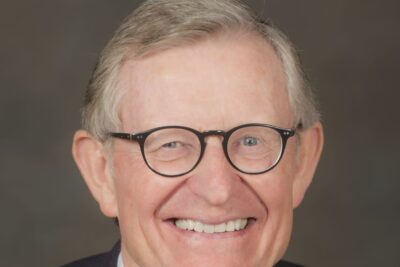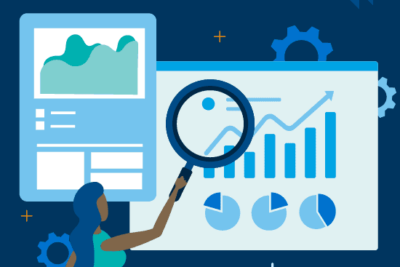How “Disney magic” can inspire higher ed to modernize the student experience
August 26, 2021, By Grace Anderson, Director, Product Marketing and Strategic Research
Last week I was repeatedly shown Instagram ads for men’s golf shorts. I was puzzled: I don’t wear men’s golf shorts. In fact, I’ve never played golf. I wondered-despite years of using the platform-does Instagram not know me? These ads felt wrong precisely because I’ve grown accustomed to ad content that is (accurately) tailored to my specific interests and preferences.
Consumers increasingly value personalized experiences in all facets of life. Students are no different. The forces that shape what they expect of the student experience are at work long before they enroll, and higher ed-known for its more sluggish approach to change-must work hard to rise to the standards of personalization and ease set by consumer industries. As they undertake this work, forward-thinking college and university leaders are looking to out-of-industry digital innovators for inspiration.
In this blog I’ll outline the trends impacting student expectations and share two lessons higher ed can learn from Disney’s Next Generation Experience project.
Higher ed enters the age of experience
When colleges and universities went remote last year, students increasingly started voicing disappointment with their experiences, both during the pandemic and before its onset. At the height of the pandemic, this culminated in “tuition refunds” trending on petition website, “Change.org”. As we emerge into a post-vaccine world, higher ed leaders face the challenge of a lifetime: how to build back better as an industry with compelling value for the students of today-and the students of tomorrow.
So, what do tomorrow's students expect? Consumer research indicates they value personalization, mobile access, and seamless digital interactions across different platforms.
48%
of Gen Z shoppers rate “tools that allow me to customize products for myself” among the new shopping technologies they’d most like to see78%
of Gen Z say mobiles are the most important devices for accessing the internet64%
of customers expect to receive real-time assistance regardless of the customer service channel they use
Sources
- “What do Gen Z shoppers really want?” IBM Institute for Business Value and the National Retail Federation, 2018
- “The Youth of the Nations: Global Trends among Gen Z”” GlobalWebIndex, 2019
- “The Omnichannel Customer Service Gap”, ZenDesk, 2013
For some in higher education, these expectations present an existential crisis: in a recent EAB survey, 43% of CFOs and other business leaders ranked “student consumer preferences” as the greatest threat institutional business models. But these expectations also present an opportunity to consider how better efficiency and more personalized processes can enable frictionless progress through the academic journey.
What we can learn from how Disney creates magic
Once upon a time (the turn of the 21st century, specifically), Disney World faced a dilemma: ticket prices were climbing and customer satisfaction was waning. In response, Disney initiated their Next Generation Experience project to explore how emerging technologies could help them transform the customer experience through greater personalization and more connected services. The result was MyMagic+, a suite of technologies that enable a whole new experience. Today, customers’ vacations adapt around them, with characters greeting guests by name and acknowledging special occasions-all while the theme parks see reduced ride wait times and higher customer volume. Here are two lessons higher ed leaders can replicate to reenvision the student experience for their institutions:

1. Put today’s assumptions aside to envision tomorrow’s most magical experience
The new Disney experience blends the physical and digital, using unique wristbands to support customer-centric interactions across various customer touchpoints. These wristbands-called Magic Bands-are fitted with RFID (radio-frequency identification) chips that store data customers input on the MyDisney Experience website (e.g., credit card information, itinerary details). The bands can be tapped at readers throughout Disney World to pay for meals, check into hotels, and even store photos taken on rides.
The beauty of this isn’t the technology itself-though it is impressive. Rather, the beauty of MyMagic+ is the ease it enables by reducing hassle at key points of the theme park experience. Any work to improve the student experience must begin with mapping experiences across all facets of campus life and identifying pain points. From completing administrative tasks to enrolling in courses to accessing physical and mental health support, what is most difficult for your students and why? What could the experience look like with those difficulties removed? And how can you work backwards to make that a reality?
2. Invest in modern digital infrastructure to bring the magic to life
To jolt their new experience vision into reality, Disney spent over $1 billion on new digital capabilities to enhance customer relationships and create magical experiences with customized interactions. This included investments in data and analytics and wearable technology, as well as training over 70,000 employees and equipping over 28,000 hotel rooms with radio frequency reading technology.
Most colleges and universities are approaching the work of redesigning the student experience from a complex and fractured system of underlying campus technology-and yesterday’s tech is ill equipped to deliver the magic of tomorrow. As you envision new experiences for your students, some innovations will invariably rely on new investments in student-facing technologies and apps, while others will require reliable integrations and data insights across your existing systems. Redesigning the student experience is a chance to also redesign your technology ecosystem to support ongoing innovation-making it fit not just for the new things you build today, but also making it easier to build new solutions to solve new challenges that emerge in the future.
Learn more about Disney's Next Generation Experience project
Explore these related resources for additional information:
Magical thinking creates a modern student experience
Colleges are not theme parks-and most certainly don’t have $1 billion to invest. But they are multi-million-dollar businesses with complex offerings which will increasingly span across the physical and digital worlds. In the context of the student experience, higher education leaders can apply “magical thinking” and the lessons from Disney’s experience work to the growing range of intersecting needs and challenges that face the students of today. Colleges and universities must think holistically about the student experience and how they can improve students’ outcomes by reducing their burdens.


“We are all land grants now”: Facing the new normal in higher education

“Test-optional” will always be challenging, and it’s not your fault
